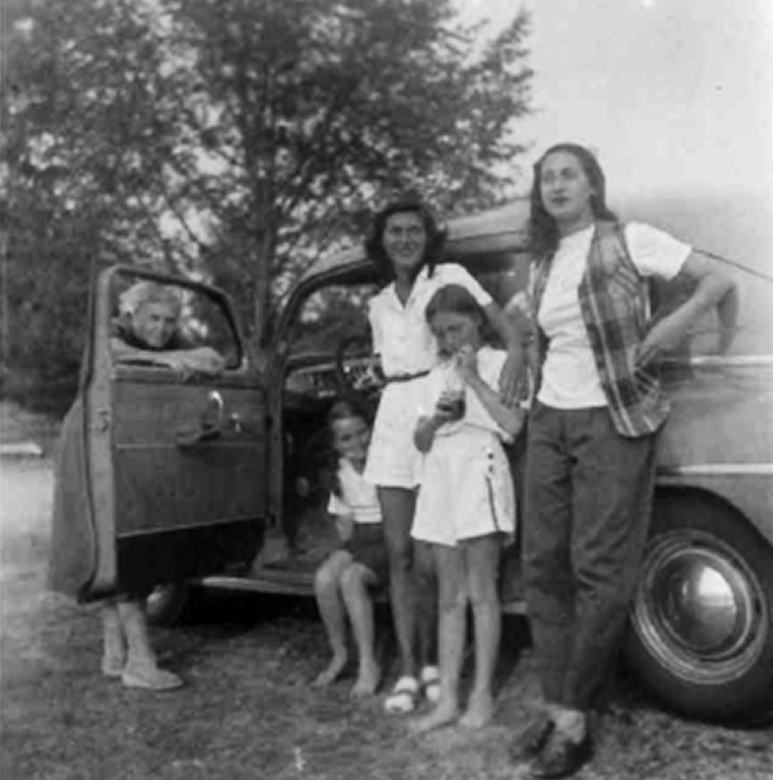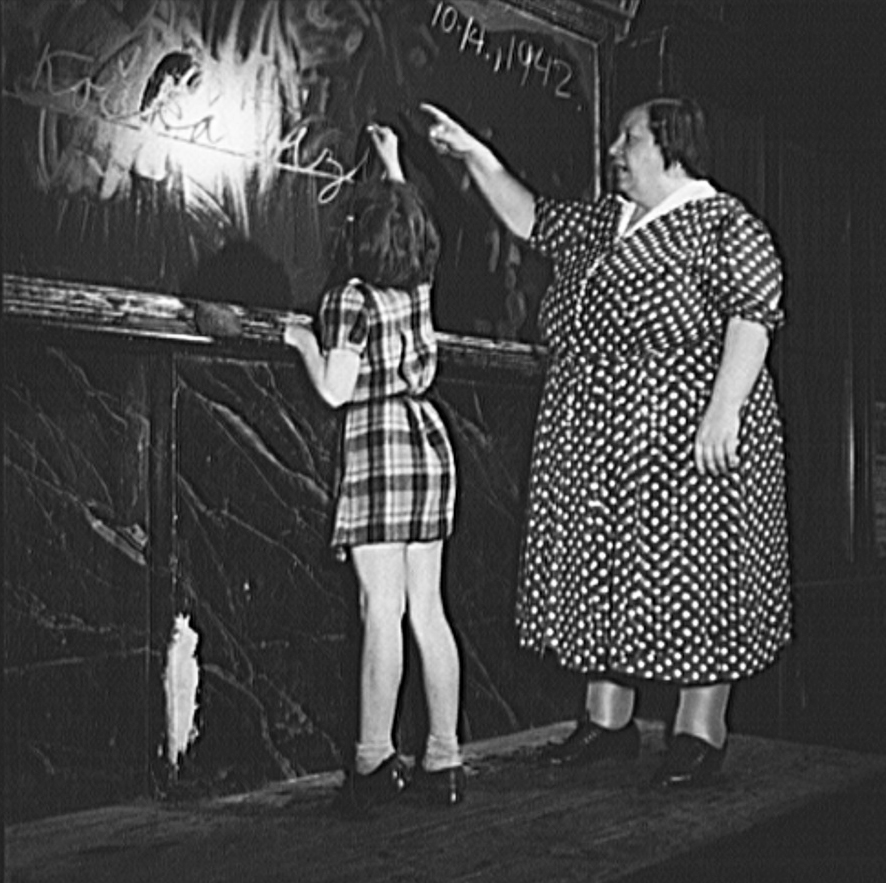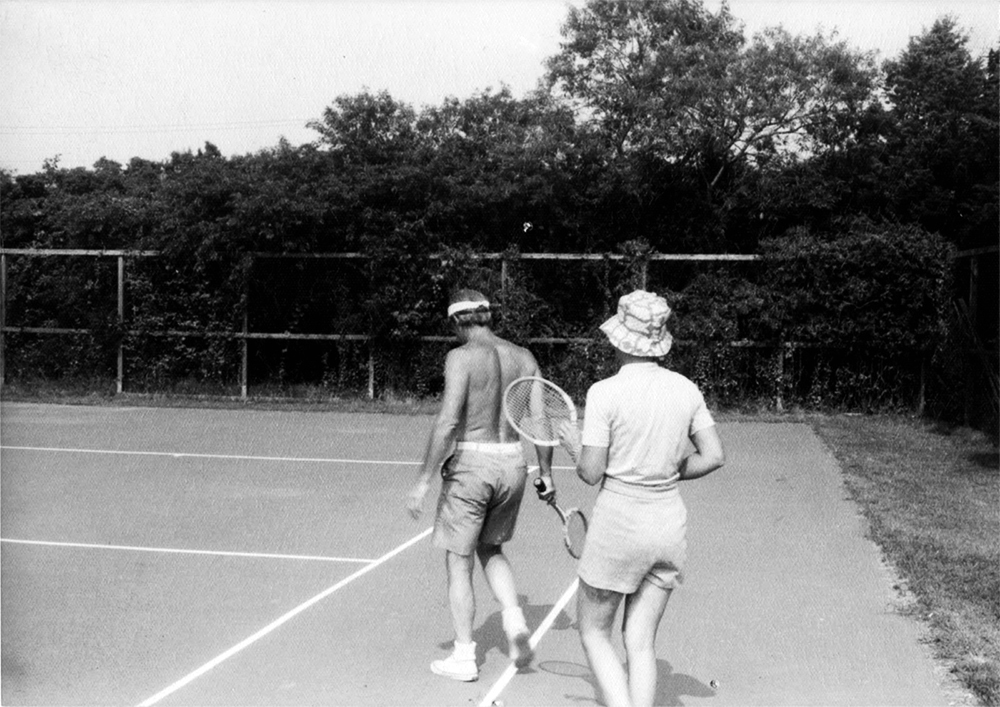Janet Malcolm, who died in 2021 after a long and distinguished career, wrote extensively and sometimes controversially about biography, photography and what, if anything, can usefully be said about our lives through words and pictures. She was not a biographer as such, expressing deep scepticism about the form and its value, and neither was she in any obvious sense a photography critic. But she retained a fascination with the practices of life-writing and image-making, and with the relationship between the two.
Still Pictures, Malcolm’s just-published final work, is a collection of twenty-six short chapters, or meditations, on this relationship. It amounts to a fragmented yet highly evocative autobiography, a genre of which she also remained wary to the end.
Most, though not all, of the chapters begin with a photograph. A few contain no reproductions at all, a few contain several, but mostly there is just one photograph, acting as a starter culture for the reflections that follow. The illustrations as they appear on the page are small and of low resolution; they don’t seem to have much of a life or significance of their own. Some come, we are told, from a cardboard box marked “Old Not Good Photos,” clearly signalling their lack of aesthetic value. They certainly don’t leap from the page, demanding our attention. It is Malcolm’s words that make them.
The title, Still Pictures, refers to the essential quality of photographic images, their status as frozen moments in time. The subtitle, “On Photography and Memory,” provides a bit more of a hint of what to expect. Are photographs, these frozen moments, the embodiment of memory, or at the very least stimulants to memory (whether those memories are collective or private), or do we accord photographs a status and power they don’t really merit?
Which takes us back to the main title, and its subtle ambiguity. Photos and snapshots, made with the greatest care or taken casually and unthinkingly, may well provide keys to the past. Or they may, in the end, still just be pictures.
Malcolm repeatedly approaches this question, before feinting and dancing away from it. We are not to be treated to conventional or indeed unconventional analysis of why this or that image works or doesn’t work, of why it might qualify as art. This is no surprise, given that she became, over many decades of engagement with photographs and their impact on our view of the world, increasingly uninterested in the theoretical exploration or artistic appreciation of photography.
In an email exchange with fellow writer on photography Geoff Dyer in 2014, published in the journal Aperture, she asserts her complete lack of interest in that trio of giants of photographic theory, John Berger, Roland Barthes and Susan Sontag. Their “writings on photography have meant almost nothing to me,” she tells Dyer in characteristically take-it-or-leave-it style.
Malcolm does however directly follow the Barthes of Camera Lucida in her insistence on the essentially private nature of our response to photographs. In Still Pictures, her readings of the photographs she has selected are partial, tentative and very personal. Our interaction with a photograph is “always, at bottom, a private reading,” Barthes wrote, a reading in which the subject of the photo intertwines with our own past and our own memories. It is not the photo that we see, but what it says to us, the memories it evokes.
Malcolm differs from many a speculative and freewheeling reader of photographs in that even what is for her a very personal image, one with an earlier version of herself in the frame, may not offer very much in the way of material. Photos, like memories, possess a natural resistance. “I am in the front row, third from the left,” she says of a class photo, but beyond that “the picture brings back no memory.” Another image, of Malcolm, her sister and “three people I don’t recognise,” is dismissed as “barely readable… It has no artistic merit and summons no memories.”
This is one of many comments Malcolm makes on the failure of photographs — photographs in this case related directly to her own life — to deliver in the memory department. I remember nothing, she will say of a photograph, yet paradoxically Still Pictures is packed with memories. Even as she tells us that, memory-wise, this or that photograph is a disappointment, the memories take off — usually in unpredictable directions, but memories all the same.

“Barely readable.” Janet Malcolm
In that image of a young Janet, her sister and the three women she does not (at first) recognise, the figures are variously arranged, in a row, against a car. The woman on the left of the frame is half standing, half leaning behind and against the driver’s open door, her face full on to the viewer, framed by the car window. A frame within a frame.
But Malcolm — and this is a sign of her dismissive brilliance — gives only the most cursory nod towards this rather obvious piece of compositional analysis. Instead, she mimics the process of looking more closely at a photograph and of a memory suddenly coming back to her. She does, after all, remember this woman in the window, but then the memory begins to fade. “There may have been some tragic story, or there may not.”
“I have a memory,” she remarks in a further reflection, and the memory sounds from her telling of it to have many of the qualities of a photograph. It is from her teenage years. Leonard and Sue are “standing together at the back of an assembly hall.” It is a highly romantic, evocative image. Both of them “exceptionally good-looking.” They form a composition on their own, apart from their “unformed” fellows. Their apartness, Malcolm says, has “stayed with me through the years.” But it isn’t a photograph, she reminds us — it’s a memory.
In this retained, unphotographed memory, Malcolm resists what can often seem to be the inevitable takeover of memory by physical and digital images. Images from our personal archives pop up unbidden on our screens and we have rapidly learned to call them what they call themselves, “memories.” Advertisements for cameras and smartphones exhort us to “make memories.” We frequently ask ourselves whether it is the event, the person, the landscape that we remember, or the photos we have of them, and we can be forgiven for suspecting it’s the photos.
In defiance of photography’s takeover bid, Malcolm makes the case for memory as memory, rather than slave to photography. In pursuit of this objective, her repeated failures to remember the events captured in a photograph can sometimes seem almost too insistent — a way of putting photographs in their place.
Yet time may be on her side. We now have the capacity, by means of AI and image-generation models, to turn memory into image using text commands, upending the balance between the two. Malcolm’s memory of Leonard and Sue, standing at the back of the assembly hall, can now be turned into a photographic image, stealing a march on the camera.
For Malcolm, Leonard and Sue notwithstanding, “most of what happens to us goes unremembered,” either by us or by photographs. When photographs of past events do exist, they don’t necessarily help in the process of recall. Rather than acting as memories on our behalf, photographs from school and holidays and family occasions can unsettle us, exactly because we may not remember anything about the event, or the people recorded in the photographic moment. A photograph, even one in which we recognise ourselves, can leave us questioning our own capacity to remember much at all.
We will sometimes look at a photograph of our past selves and be unsettled by how long ago it seems. Even or perhaps especially if the image comes with a date-stamp, we can feel disoriented. The date just doesn’t seem right. The photograph could easily belong to an earlier period of history, before ours. Instead of bringing back our youth, a photograph can push it further away. “I am struck,” Malcolm says of that school photo, “by how different the girls look from some of the girls of today, as though they were living in the nineteenth century and being photographed by Mrs Cameron.”
At the same time as she identifies the gaps that separate photography and memory, Malcolm also emphasises their similarities. She likens the events of our lives to photographic negatives — “the few that make it into the developing solution and become photographs are what we call our memories.” The photographs we retain in our heads are the ones we have developed, curated and stored. The others have been discarded with the contact sheets.
Strikingly, Malcolm compares the creation and retention of memories to a photographic process that is now outdated, one of analogue cameras and darkrooms and developing fluid; it is an old method for old memories. But this metaphor has a notable absence: there is no mention of the photographer, no human hand placing the negative in the tray. In the same way, the images that Malcolm reflects upon in Still Pictures are by photographers unknown or unsung.
Occasionally, a professional, named photographer does intrude. Decades after they were taken, a small bundle of photographs turns up unexpectedly in the mail. They are part of a set by Marjory Collins, one of the remarkably gifted photographers deployed by the Office of War Information to document American life during the second world war. Malcolm’s family, as Czech immigrants, was selected to be photographed as part of a “propagandist” project designed to show America’s rich and welcoming social variety.

Young Janet Malcolm with “Slečna.” Marjory Collins/Library of Congress
The photograph that begins the chapter shows Janet’s teacher of Czech in pedagogical pose, pointing at the blackboard, while Janet herself, not yet tall enough to do so with ease, reaches up aspirationally with her chalk, her back to the camera. What follows on from the image is a moving reflection on the teacher, known to her pupils only as “Slečna,” or “Miss,” about whose life Malcolm knew and knows little. She can speculate, but can’t in any meaningful sense remember, either the events depicted in the photograph or the specific moment in which it was taken.
The unexpected package contains only a dozen or so photos — the one of “Miss” at the blackboard and other moments involving her childhood self — but there must, we infer, have been a good many more. Indeed “must have” becomes a brief refrain. Marjory Collins “must have” spent several days on these photo sessions. She “must have” sat in that empty chair after taking her photos of the family at table.
By this stage, a third of the way through the book, we are already unsurprised as Malcolm distances herself from these photos of her and her family: “I have no memory of the sessions with Marjory Collins.” In Malcolm’s memory, Collins as photographer is near to invisible.

“Outstandingly terrible.” Janet Malcolm
In her final chapter, “A Work of Art,” Malcolm returns to this question of authorship in photography. She recalls the publication in 1980 of a collection of her photography pieces, Diana and Nikon, pieces that had previously appeared, without illustrations, in the New Yorker. To support her text, Malcolm selected examples, by prominent practitioners, “of a new kind of avant-garde photography that took its inspiration from — and to all intents and purposes was indistinguishable from — the home snapshot.” The provocativeness of that word “indistinguishable” foreshadows what comes next.
Among her examples of “artless” photography, Malcolm includes a bit of mischief — an “outstandingly terrible snapshot” of unknown provenance that her husband had long ago chanced upon and kept for its very awfulness. She connives to attribute the image to her husband, thereby identifying him as creator rather than mere collector. With gotcha delight, Malcolm describes in Still Pictures how this interloper of an image, with its newly assigned authorship, assumes an afterlife of reiterated artistic merit, solely because she has deemed it such.
In her study of the impact of social media on memory, The End of Forgetting (2019), Kate Eichhorn argues that the ubiquity and digital longevity of photos mean that “the ability to break away from the past is severely compromised.” How can we move successfully into the future, she asks, “carrying an archive of past images?”
Photographs are everywhere, their numbers increasing daily to reach yet further unimaginable heights. Everyone takes them, looks at them, exchanges and archives them. They are in danger, we fear, of overwhelming our lives, substituting recorded memories for the real thing, for what we have come to defiantly call our “lived experience.”
For Janet Malcolm, this is to exaggerate the power of photography. Her personal, randomly retained collection of largely undistinguished images is not so much a burden as a mystery. These photos stimulate memories, again often at seeming random, but they don’t substitute for them. Sometimes we connect with the past our photos represent, sometimes we don’t. The memories contained within the photos are anything but simulacrums of her own — the most she can expect is that if she looks at an image long enough, a connection will form, and something in the frame will “begin to speak.” •
Still Pictures: On Photography and Memory
By Janet Malcolm | Text Publishing | $29.99 | 155 pages




